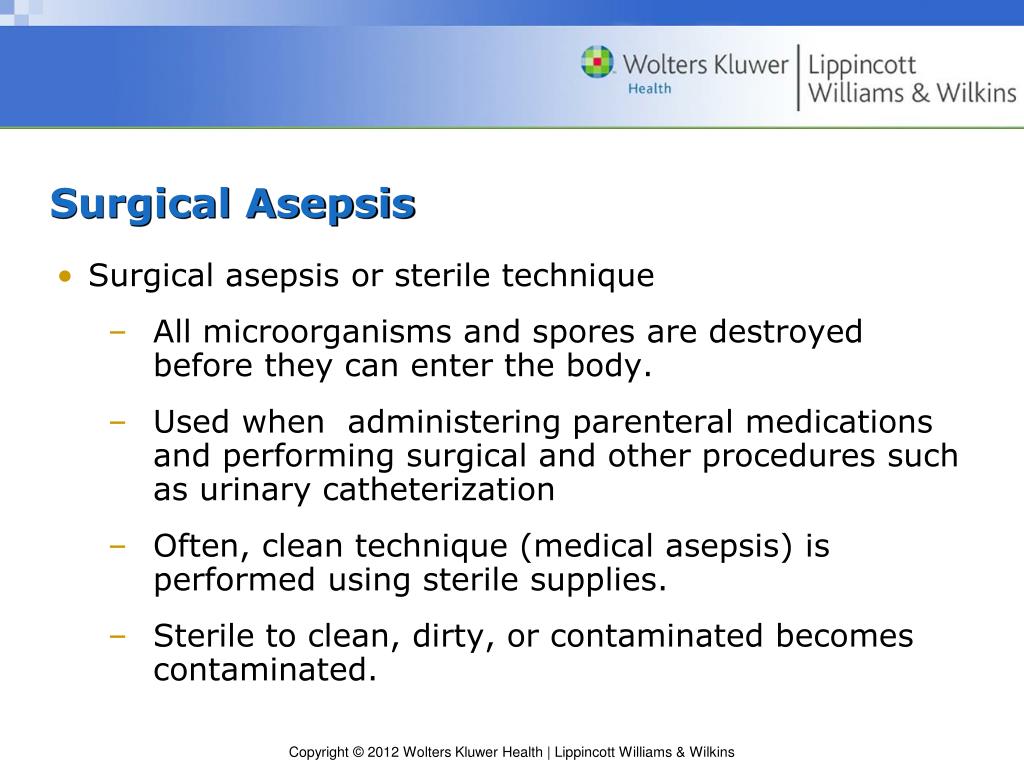


As a nursing assistant, your hands will touch many people and objects when providing care. Health care providers’ hands are the most common mode of transmission of microorganisms. There are two hand-hygiene techniques: handwashing with soap and water and the use of alcohol-based hand rub (ABHR), also referred to as hand hygiene gel or hand sanitizer. Hand hygiene is the process of removing, killing, or destroying microorganisms or visible contaminants from the hands.
#Chapter 16 blood borne pathogens and principles of asepsis how to
Knowing when to wash your hands, how to properly wash your hands, and when to use soap and water or hand sanitizer are vital for reducing the spread of infection and keeping yourself healthy. The easiest and most effective way to break the chain of infection is by using proper hand hygiene at appropriate times during patient care. Using transmission-based precautions when indicated.Proper cleaning and sanitizing of the environment, equipment, and devices.Implementing respiratory hygiene for staff, patients, and visitors.Using personal protective equipment (e.g., gloves, gowns, masks, eyewear) whenever exposure to infectious agents may occur.Using proper hand hygiene at the appropriate times.Īccording to the Centers for Disease Control and Prevention (CDC), standard precautions include the following : These precautions reduce the risk of exposure for the health care worker and protect patients from potential transmission of infectious organisms. Standard precautions are based on the principle that all blood, body fluids (except sweat), nonintact skin, and mucous membranes may contain transmissible infectious agents. Standard precautions should also be used when assisting a client with activities of daily living (ADLs) and using water, soap, or lotion. Standard precautions are used by health care workers during client care when contact or potential contact with blood or body fluids may occur. Health care agencies use several methods to prevent the spread of infection: standard precautions and transmission-based precautions. 4.4 Precautions Used to Prevent the Spread of Infection


 0 kommentar(er)
0 kommentar(er)
